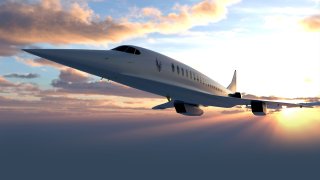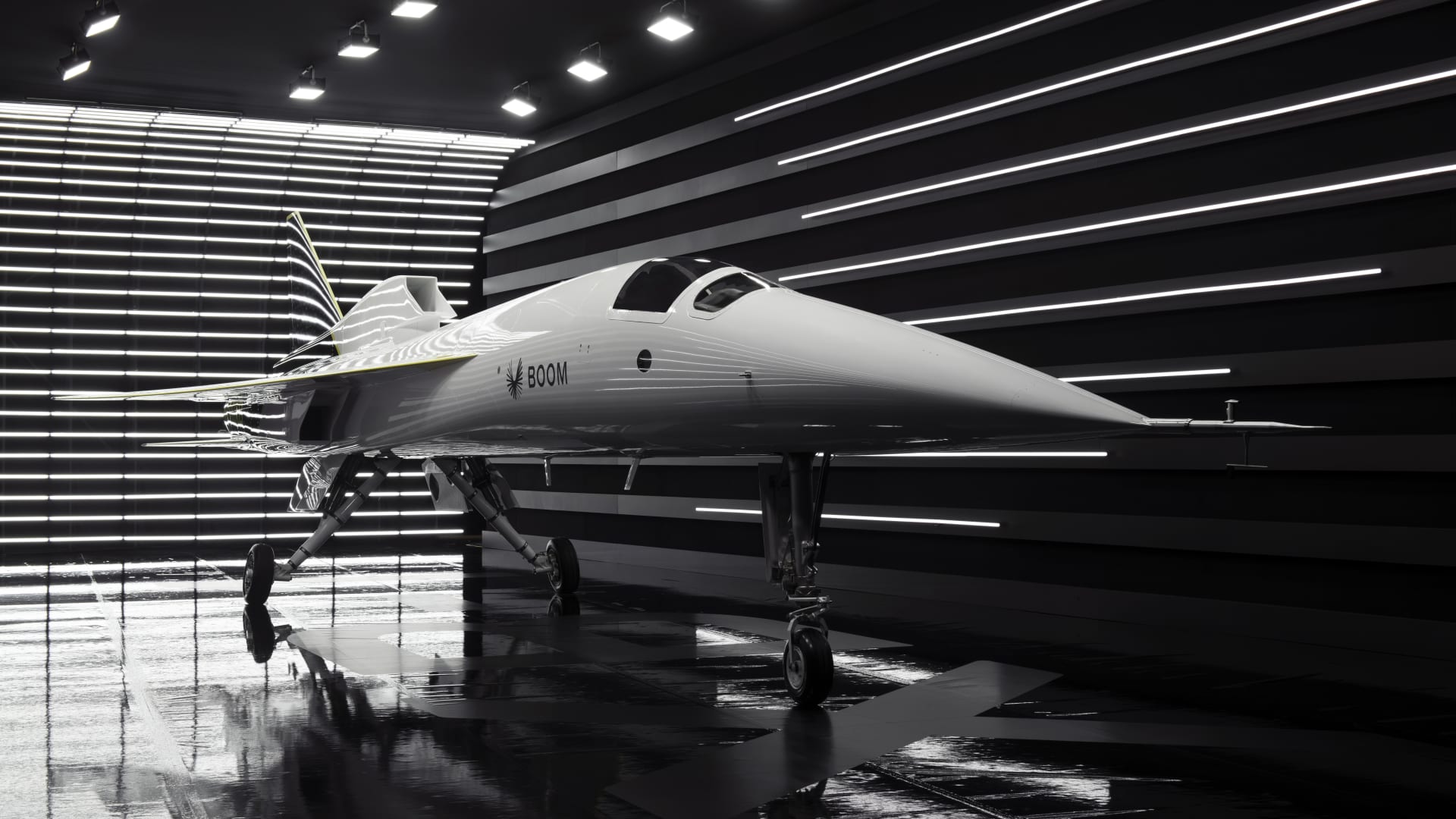
- Amazon Web Services announced on Tuesday that Boom Supersonic is going 'all-in' as a cloud-computing customer.
- Boom says AWS will power the design, development and manufacturing of its next-generation supersonic jet Overture.
- "We're working on a revolution, how we fly at Boom, and it turns out the key to making that happen is the ability to go access basically direct supercomputers on demand, and so that's what we're doing with AWS," Boom founder and CEO Blake Scholl told CNBC.
Amazon Web Services announced on Tuesday that Boom Supersonic is going 'all-in' as a cloud-computing customer, which the aviation start-up says will power the design, development and manufacturing of its next-generation jet.
Boom founder and CEO Blake Scholl told CNBC that the deal with AWS represents his company deepening its relationship with Amazon, with Boom expanding its use of cloud-computing to "new high performance instances" that will "further upgrade our ability to run simulations rapidly and inexpensively."
"We've been working with [AWS] behind the scenes for several years, with 53 million compute hours running virtual wind tunnel tests," Scholl said.
Boom declined to the specify the length or value of the contract it signed with AWS. But the deal represents one of the first public moves by the Aerospace and Satellite Solutions unit that AWS established in June. The unit is looking to provide services for nearly every sub-sector in the aerospace and space industries, with supersonic aircraft design and manufacturing the latest addition.
"We are thrilled to be collaborating with Boom to leverage the cloud to launch the next era of travel. By going all-in on AWS, Boom can innovate without bounds and more quickly than was previously possible, to make the world more accessible to everyone," AWS vice president Teresa Carlson said in a statement.

Boom's Scholl coincidentally began his working career at Amazon about two decades ago as a software engineer. He said he "learned the Amazon ethos of invention and looking to make things faster and better, whatever they are."
Money Report
"Now we're working on a revolution, how we fly at Boom, and it turns out the key to making that happen is the ability to go access basically direct supercomputers on demand, and so that's what we're doing with AWS," Scholl said.
In designing Boom's XB-1 demonstrator aircraft, which it unveiled in October and has begun ground testing, the company completed "hundreds of virtual wind tunnel tests" through AWS. Scholl compared that to the supersonic Concorde, which was designed with 12 physical wind tunnel tests.
"You're able to test literally hundreds of potential different airplane designs in parallel and understand which ones gives you the best lift for the least drag, which ones achieve high speed efficiency, [and smooth handling for safe takeoff and landing," Scholl said. "You'll notice that there's hardly a straight line anywhere on the airplane and every single piece of the aircraft is intricately tailored."
Scholl described cloud-computing as "really leveling the playing field between what a start-up can do and what a big company or government can do." Boom's entire workforce is about 150 employees, but without automation Scholl estimates the company "would probably be 10 times bigger than that."

Boom's work designing XB-1 is now complete, with the company now preparing to take the test jet to the Mojave Desert in California to "get up in the air and progress towards setting some speed records," Scholl said. Boom is now using AWS to finalize the design of its Overture commercial airline, which Scholl said will "consume 100 million core hours" of computing time. Overture is designed to seat upwards of 65 passengers, with Boom aiming to begin flying the larger jet in a few years and certify it for commercial flights by 2029.
"Ultimately where we want to get is affordable high-speed flight anywhere in the planet," Scholl said. "We're starting with Overture, a big leap forward from Concorde and twice as fast as anything else flying today, and applicable on any transoceanic route ... There are still regulatory issues of supersonic flight over land, [but initially we'll] tackle about 500 routes on the planet that are primarily over water."
Boom has already generated more than 525 terabytes of design and test data with XB-1, which will now move to AWS. And, moving forward with manufacturing in the years to come, Scholl said Boom will use AWS to "coordinate the entire supply chain and how that happens digitally."
"We'll know where every single part is in the supply chain, how that's progressing into the factory for assemblies, and then also be able to have that traceability for every single part that goes on the aircraft when it's out in the field," Scholl said.
Subscribe to CNBC PRO for exclusive insights and analysis, and live business day programming from around the world.






